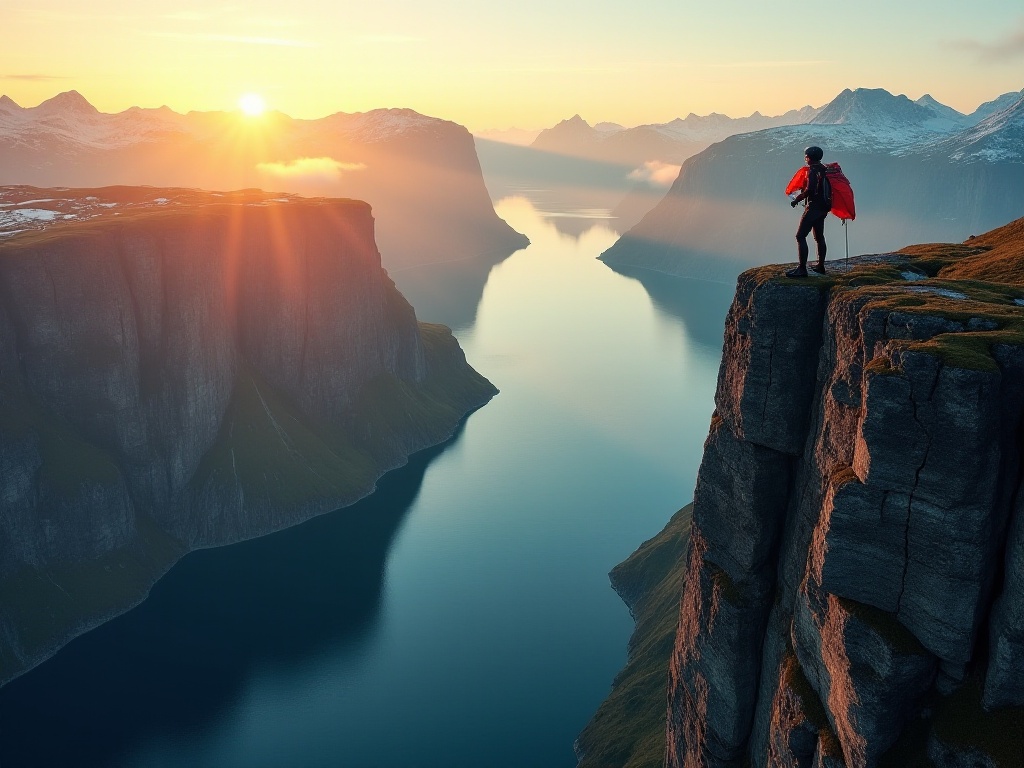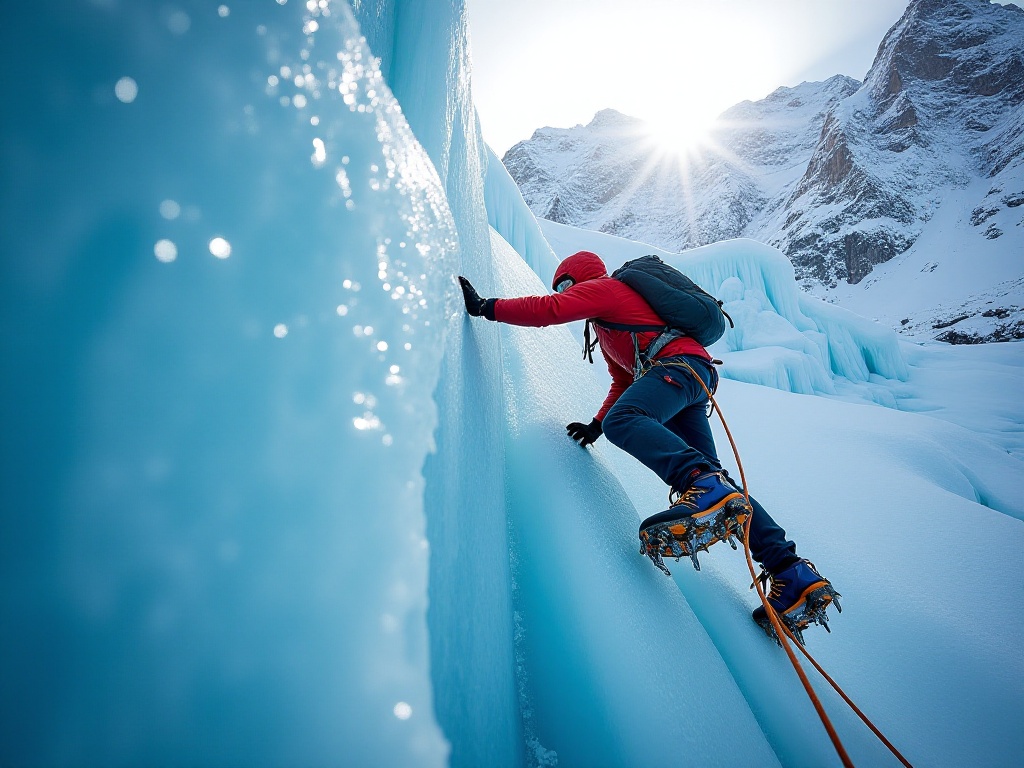An Unexpected Incident
It was an early morning in 2024 at the Everest base camp, with temperatures dropping to -20°C. The howling cold wind mixed with fine snow particles stung my face. I was in my tent carefully checking my skiing equipment: skis, poles, helmet, and protective gear - nothing could be overlooked. Suddenly, the camp's tranquility was broken by urgent shouts. I rushed out of my tent to find chaos at the neighboring camp. A young German climber had suffered severe altitude sickness during his high-altitude adaptation training because he started intense exercise without proper warm-up.
Watching the medical team's quick and orderly rescue, I remained unsettled for a long time. The German was only 25, two years younger than me, with multiple experiences of alpine skiing in the Alps. But Everest is different - it's the world's highest peak at 8,848 meters, with thin air and unpredictable weather. The slightest mistake could be fatal.
This incident made me deeply contemplate: what kind of travel is extreme sports tourism? Why do more and more people choose to participate despite such high risks? I remember before departure, my mom kept worrying, thinking I was gambling with my life. But for me, this wasn't just an adventure - it was a journey to find myself and push my limits.
Redefining
When many people think of extreme sports tourism, they imagine dangerous scenes: climbing cliff edges, white-water rafting, or skydiving. But through personal experience, I've discovered that extreme sports tourism is far more professional and standardized than imagined.
Take my Everest skiing journey as an example. Before formal training began, I spent six full months preparing. First was physical training - running at 5 AM daily and visiting the gym at least three times weekly to specifically train core strength and endurance. Next was skills training - I attended a month-long alpine skiing training camp in New Zealand to learn various professional techniques. Finally, there was psychological adjustment through meditation and yoga to improve focus and stress resistance.
At Everest base camp, each day brings new challenges. Wake up at 5 AM, do an hour of warm-up exercises, then begin the day's training. From basic equipment use to complex snow condition assessment and emergency response, every step must follow strict standards. My guide was a professional coach from Switzerland with 20 years of alpine skiing experience who had led multiple Everest skiing expeditions. Under his guidance, I learned not only professional skiing techniques but more importantly, how to stay calm and rational in extreme environments.

The Difference
The difference between regular tourism and extreme sports tourism is like watching a movie versus acting in one. The former is about appreciation, the latter about creation.
At Everest base camp, you can see tourists coming and going every day. They take photos, selfies, group pictures, then hurry away. But for us extreme sports tourists, Everest isn't just a scenic spot - it's a challenge. We stay here for at least a month, facing extreme natural conditions daily.
In the morning, while tourists are still in their warm hotel beds, we've already started our daily training. Wearing heavy equipment, carrying skis, following the guide to the training ground. Temperatures below -20°C, thin air, plus constantly changing weather - every step tests our willpower.
But it's these challenges that help us truly understand our limits. I remember one day after training, lying in my tent, aching all over and struggling to breathe, yet feeling extraordinarily peaceful. At that moment, I suddenly understood why so many people want to challenge Everest. Here, you not only see the majesty of the world's highest peak but also discover your inner strength.

Project Introduction
The variety of extreme sports tourism is incredibly rich. Through my experiences over these years, I've tried everything from sky to ground, and each activity has left me with unforgettable memories.
Let's start with aerial activities. The bungee jumping experience in Queenstown, New Zealand last year still makes my blood pump when I think about it. Standing on a 47-meter platform, rushing river below, whistling wind in my ears. The instructor counted down 3, 2, 1, I closed my eyes and jumped. That feeling of weightlessness, that freedom of soaring through the air, is something you can never experience on the ground. Besides bungee jumping, I've tried paragliding and skydiving. I remember my first skydive, when the door opened at 4000 meters, the whole world went quiet. Looking down at the earth with clouds beneath my feet felt like standing at heaven's gate.
Water activities are equally exciting. The year before last, during a seven-day rafting trip through the Grand Canyon on the Colorado River, the river alternated between calm and rapid, with every turn potentially bringing thrilling rapids. But what I remember most weren't the thrills, but the quiet moments. Camping by the river at night, lying in a sleeping bag watching the stars, listening to the flowing water, feeling nature's incredible craftsmanship.
Land activities opened my eyes even wider. From motorcycling in the Sahara Desert to dog sledding in Alaska, each experience was a new adventure. Especially last year's cycling on Bolivia's Death Road, a narrow road built on cliff edges with steep walls on one side and deep chasms on the other. The 64-kilometer route with a 3600-meter altitude drop is called the world's most dangerous road. But it was in such environments that I truly experienced the charm of extreme sports.

Current Market Status
As more young people seek personalized travel experiences, the extreme sports tourism market is developing rapidly. According to the latest statistics, this industry now accounts for 5% of the entire adventure tourism market, with approximately 500,000 participants annually. This number continues to grow, especially among the post-90s and post-00s generations.
Interestingly, the age range of participants is widening. At Everest base camp, I met a 62-year-old "old buddy" from Canada. A former accountant before retirement, he decided to replan his life and try various extreme sports. He has now completed climbing the highest peaks of all seven continents and came to Everest for skiing. Watching his focus and persistence during training truly moved me.
Additionally, the rise of gap year culture has brought new opportunities for extreme sports tourism. More students are choosing to take a year off before further education or work to experience different lifestyles around the world. The number of gap year students has doubled in the past five years. These young people's desire for adventure and willingness to try new things have injected new vitality into the extreme sports tourism market.
From a consumption level perspective, extreme sports tourism isn't cheap. Taking my Everest skiing trip as an example, the basic cost alone was nearly 300,000 RMB, including guide fees, equipment rental, and camp fees. Including preliminary training and insurance costs, the total exceeded 500,000 RMB. Yet despite the high price, market demand continues to grow. This indicates rising demand for high-quality, in-depth experiential tourism.

Safety Guarantees
When it comes to extreme sports tourism, safety always comes first. Although this type of travel inherently carries certain risks, the current safety guarantee system is quite comprehensive.
First is insurance. Participating in extreme sports tourism requires specialized insurance - regular travel insurance isn't enough. My insurance coverage included high-altitude activities, altitude sickness, emergency rescue, and other aspects, with coverage up to 1 million USD. Although the premium was expensive, it was a necessary investment.
Second is equipment. Modern extreme sports equipment employs the most advanced technology to maximize user safety. For example, our skis were equipped with GPS tracking systems for real-time location monitoring. Helmets also had communication devices for constant contact with the ground camp.
Third is personnel. Each project must have professional guides leading the team. These guides must not only have rich practical experience but also pass strict certification. My guide held the highest-level certificate from the International Federation of Mountain Guides Associations (UIAGM), widely recognized as the industry's most prestigious qualification.
Finally, there's training. Before officially starting the project, all participants must receive systematic safety training. From basic survival skills to emergency handling and medical first aid knowledge, no aspect can be overlooked. I remember on my first day at Everest base camp, the guide gave us 8 full hours of safety training, with such professional and detailed content that it filled me with confidence for the upcoming challenges.

Future Outlook
After this Everest trip, I gained a deeper understanding of extreme sports tourism. It's not just a way of traveling, but a life attitude, a spirit of constantly challenging oneself and breaking through limits.
From a market development perspective, extreme sports tourism has a very bright future. On one hand, as young people's consuming power increases, the demand for high-quality, personalized travel experiences will grow. On the other hand, technological advances will make extreme sports safer and more controllable, attracting more participants.
However, we must also clearly recognize that extreme sports tourism isn't suitable for everyone. It requires participants to have adequate psychological preparation and physical fitness, invest significant time and energy in training, and accept corresponding risks and responsibilities.
Personally, this Everest skiing trip completely changed my perception of travel. Here, I not only experienced the magnificent scenery of the world's highest peak but more importantly, met like-minded friends, experienced unprecedented challenges, and discovered my inner strength. This kind of experience is something ordinary tourism can never provide.
In the future, I will continue to explore more extreme sports activities. Because I believe only through challenges can we truly know ourselves, break through our limits, and become better versions of ourselves.
Of course, everyone has their own understanding and choices regarding travel. Some prefer comfortable holiday styles, while others seek thrilling adventurous experiences - both are completely understandable. What's important is finding the way that suits you and enjoying the happiness and growth that travel brings.


